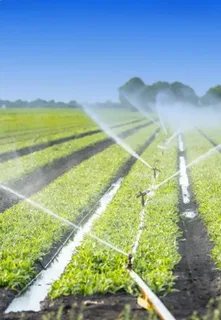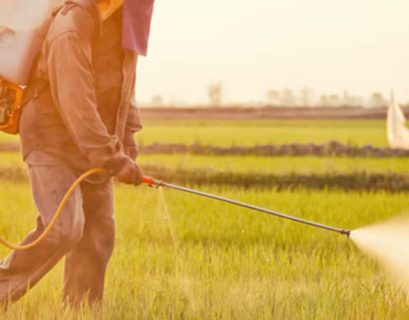Agriculture is the backbone of human existence, providing food and raw materials to sustain livelihoods globally. Yet, the sector faces numerous challenges, such as climate change, water scarcity, soil degradation, and fluctuating market demands. To overcome these issues, it is crucial to adopt sustainable methods that enhance resilience in farming systems. Building resilience means enabling agriculture to thrive in the face of adversities while ensuring long-term productivity and environmental conservation.
What is Agricultural Resilience?
Agricultural resilience refers to the ability of farming systems to recover from challenges like extreme weather, pests, and economic shocks. It involves practices that strengthen the soil, optimize resource use, and reduce reliance on external inputs. Sustainable methods not only support resilience but also contribute to higher yields and more stable farming systems.
Challenges Facing Agriculture Today
Farmers worldwide face various challenges that threaten their ability to produce sufficient crops. These include:
- Climate Change: Rising temperatures, erratic rainfall, and extreme weather events disrupt planting and harvesting schedules.
- Depleting Soil Fertility: Over-reliance on synthetic fertilizers and monocropping has led to nutrient depletion in soils.
- Water Scarcity: Irrigation inefficiencies and shrinking water resources limit agricultural growth.
- Pest and Disease Outbreaks: Increased reliance on chemical pesticides has led to resistance in pests, making them harder to control.
Addressing these challenges requires a shift toward sustainable agricultural practices that enhance resilience while reducing environmental impact.
Sustainable Methods for Building Agricultural Resilience
1. Crop Diversification
Crop diversification is one of the simplest ways to build resilience. It involves planting multiple crops instead of relying on a single one, reducing the risk of total crop failure. Diversified farms are more adaptable to changing weather conditions and less susceptible to pests and diseases.
For instance, planting legumes alongside cereals improves soil health by naturally replenishing nitrogen levels. Farmers who diversify their crops are also better protected from market fluctuations, as they have multiple sources of income.
2. Using High-Yield Vegetable Seeds
High-yield vegetable seeds are crucial for sustainable farming. These seeds are specifically developed to resist pests, diseases, and harsh weather conditions while producing higher yields.
For example, hybrid and genetically modified seeds have revolutionized vegetable farming by offering increased productivity and reduced input costs. By investing in high-yield vegetable seeds, farmers can ensure better crop performance even in adverse conditions. These seeds also reduce dependency on chemical inputs, making farming more environmentally friendly.
3. Soil Health Management
Healthy soil is essential for resilient agriculture. Practices like crop rotation, cover cropping, and using organic fertilizers improve soil fertility and structure. These methods also minimize erosion and maintain the soil’s ability to hold water and nutrients.
Cover crops, such as clover and rye, protect the soil during off-seasons and add organic matter when tilled back into the ground. Composting is another effective method that reduces waste while enriching soil with essential nutrients. Maintaining soil health ensures long-term productivity and reduces the need for synthetic fertilizers.
4. Efficient Water Management
Water is a critical resource for agriculture, yet it is often mismanaged. Sustainable irrigation techniques, such as drip irrigation and rainwater harvesting, help conserve water and ensure its efficient use.
Drip irrigation delivers water directly to plant roots, minimizing evaporation and runoff. This method is especially useful for vegetables, which require consistent moisture for optimal growth. Rainwater harvesting systems collect and store rainwater for future use, reducing reliance on groundwater.
By adopting these practices, farmers can grow crops effectively even in water-scarce regions, ensuring sustainable farming operations.
5. Integrated Pest Management (IPM)
Integrated Pest Management combines biological, cultural, and chemical methods to control pests in an eco-friendly manner. This approach reduces reliance on chemical pesticides, which can harm the environment and lead to pesticide resistance in pests.
IPM strategies include:
- Using natural predators to control pest populations.
- Practicing crop rotation to break pest life cycles.
- Applying pesticides selectively when absolutely necessary.
IPM ensures healthier crops while preserving beneficial insects and maintaining ecological balance.
6. Agroforestry
Agroforestry is the practice of integrating trees and shrubs into farming systems. This method offers multiple benefits, including:
- Protecting crops from wind and soil erosion.
- Enhancing biodiversity by creating habitats for wildlife.
- Providing additional income through timber, fruits, and other tree products.
Agroforestry systems are more resilient to climate change and help sequester carbon, making them an excellent choice for sustainable farming.
The Role of Technology in Resilient Farming
Modern technology has transformed agriculture, making it more efficient and sustainable. Tools such as drones, sensors, and satellite imaging allow farmers to monitor their fields in real-time, identifying issues like nutrient deficiencies or pest infestations early.
Precision farming techniques, such as GPS-guided equipment, optimize the use of inputs like seeds, fertilizers, and water. These innovations reduce waste, lower costs, and improve yields. Data analytics also helps farmers predict market trends and weather patterns, enabling better planning and decision-making.
Benefits of Sustainable Agriculture
Adopting sustainable methods offers numerous advantages, including:
- Higher Yields: Practices like using high-yield vegetable seeds and efficient irrigation improve productivity.
- Environmental Conservation: Reducing chemical use and conserving water helps protect ecosystems.
- Economic Stability: Lower production costs and diversified incomes enhance farmers’ financial security.
- Climate Adaptation: Techniques like crop rotation and agroforestry make farms more resilient to extreme weather.
Success Stories of Sustainable Farming
Farmers worldwide are witnessing the benefits of sustainable agriculture. For example, smallholder farmers in India who adopted drip irrigation and high-yield seeds reported a 40% increase in vegetable production. Similarly, agroforestry initiatives in Africa have helped combat desertification while boosting local incomes.
These examples highlight the transformative potential of sustainable methods in building resilience and ensuring food security.
Conclusion
Sustainable agriculture is not just a necessity but a pathway to a better future. By embracing practices like crop diversification, using high-yield vegetable seeds, and efficient water management, farmers can build resilience against challenges and secure their livelihoods.
Modern technology and innovative approaches are empowering farmers to achieve higher productivity with minimal environmental impact. As the world grapples with climate change and resource depletion, sustainable farming offers a glimmer of hope for a resilient agricultural system that meets the needs of present and future generations.











